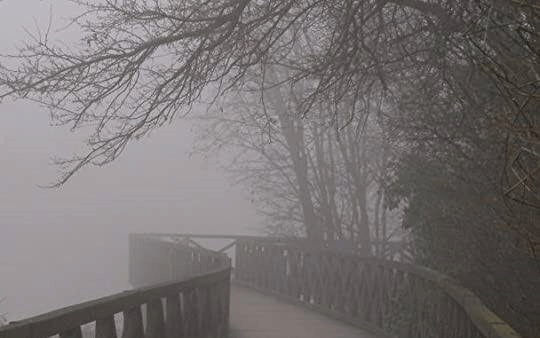Fog Summary Class 10 EnglishIntroductionA poem by Carl Sandburg called "Fog" displays his fascination with nature. The poet does an excellent job of describing the moments when the fog began to move across the harbour waters. By using a metaphorical cat, the poet creates a striking image of the fog. 
About PoetCarl August Sandburg was an American poet, author, editor and writer. He received three Pulitzer Prizes: two for poetry and one for his superb Abraham Lincoln biography. Carl Sandburg was born on January 6, 1878, and passed away on July 22, 1967, at the age of 89. He was universally recognised as a significant character in modern writing. Some of his most well-known works include "Chicago Poems" and "Cornhuskers: Smoke and Steel." OverviewThe poem Fog, which captures Carl Sandburg's fascination with nature, is summarised here. It expertly catches the appearance and movement of the fog. He uses a symbolic cat to convey a strong message about life. The fog in Chicago is important to its meaning. The poet makes the analogy between the cat and the fog since both arrive with gentle paws and without warning. The fog that the poet is describing is often observed during the winter and is moving towards the city and harbour like a cat. The next poet claims that the city and harbour are entirely shrouded in fog and that a cat can be seen sitting with its legs folded and gazing around. The poet also spoke of the fog's quiet, erratic exit. SummaryEditor and poet Carl Sandburg was a well-known name in America. He has three Pulitzer Prizes to his name. His home city of Chicago was the subject of the majority of his poetry. The "Fog" is the shortest poem in any of his several volumes of poetry. However, this poem contains some compelling observations about nature. There is a powerful and deeper significance to this poetry. The poem's opening two lines only describe how fog enters the scene. In chilly climates, on mountains, or in forests, fog is apparent. However, the poet in this poem describes the fog that is present in the cities and harbour. He made a nice analogy between a cat and the fog. Most of the time, a cat comes around us so slowly that no one can see it. The same is true of the fog and its appearance. It just enters and takes over the entire area. It continues for a while, causing problems for everybody in its path, yet continues to act as if it is unaware of what is going on around it. The poet continues, saying that it just arrives, sits by the port, and surveys the city. It is at a standstill before making its ultimate move. Here, the poet described what occurs once the fog has descended. Because they are so silent and take time to appear, fogs as such pose no threat. But when there is fog, particularly in cities, many accidents may happen because of poor visibility. Therefore, while driving on the road, people cannot see anything between them clearly due to fog. Hence, fog can occasionally be very dangerous to human life as well. So a fog descends like a small, quiet kitten, covers the entire city, and sits there admiring the beauty. Last but not least, the poet is expressing how a little child gets bored playing one game and switches to another. In a similar vein, the fog doesn't linger in one spot for too long. Therefore, after a while, the fog also dissipates. No area experiences greater periods of fog. ConclusionThis extremely little poem beautifully captures the act of nature. The idea of transformation and optimism is conveyed in the poem Fog beautifully. Both humankind and the environment are subject to change. Everything is in flux. The city was calm, and life went on as usual, according to the poem. However, shortly after, the fog stops everything. Nevertheless, it eventually disappears and does not last indefinitely. FAQ's1. What message does the chapter fog convey? The poet describes a feature of nature in the poem "Fog" using an intriguing metaphor. By suggesting that the motions of the fog are similar to those of a cat, he subtly equates fog to the feline. It moves stealthily, like a cat, and penetrates a city without anybody noticing it. 2. In what ways does the poet liken a living thing to a fog? The fog is compared to a cat by the poet. The way a cat moves silently and rests on its haunches is quite similar to how fog rolls in, envelops, and watches over a city. 3. There will always be challenges, but they won't last forever. People come and go. Remark with reference to the poem "Fog" When faced with difficulties, people often feel hopeless and destroyed. To solve any difficulty, you must have a lot of guts. If we follow the poem's lead and relate challenges to fog, we see that both come and disappear just like fog. When difficulties arise, one should not give up hope or lose confidence; instead, one should approach them as if they were fog, understanding that they have not arrived to stay but will always depart, just like fog. |
 For Videos Join Our Youtube Channel: Join Now
For Videos Join Our Youtube Channel: Join Now
Feedback
- Send your Feedback to [email protected]
Help Others, Please Share









